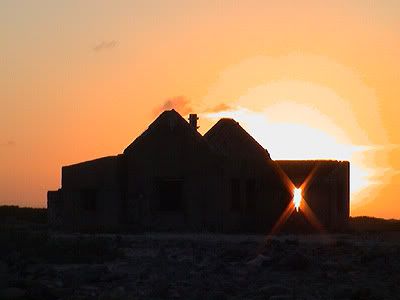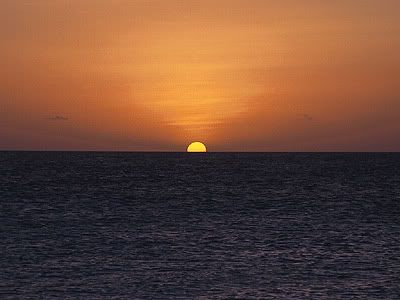Cindy -
|
Thanks Greg, I'll forward that page to Jim. I played with it at Christmas and it works pretty good with very small, stationary objects in the macro mode. yes, we can turn the digital zoom off and will in the future.
|
I haggled with this issue myself. Initially I turned off the digital zoom, more recently I've turned it back on but rarely use it. You are just cropping the picture, which could easily be done while editing, but I lazy and cropping in the camera does have some appeal. My camera shows a little line where the digital zoom starts and the control delays before crossing the line. Pretty smart those Sony engineers.
|
the original purpose of the digital camera was to photograph jewelry and rocks for the web page and auctions. Of course, we now use it for everything. It's so convenient. Ours is a Canon PowerShot S30
|
Cecil is pretty close with his cropping comment. A more detailed explanation from the site:
|
Greg on another issue, the digital wallet. I've pretty much convinced myself that I can get by with a 64Meg and a 128Meg cards. I have the 64 and the 128 is running around $65. That would give me around 300 pictures, should be enough for a week vacation, after I delete the losers.
|
I have a 16mg and a 32mg. I'm amazed how much stuff I can fit on them. We took 65 pictures and 2 movies one night on 1600x1200 res. Have to admit, I still haven't figured out all the settings. Was just playing with the digital on/off and macro settings. Some came out clear and others didn't, still a learning process.
|
Cecil -
|
Cecil -
|
Greg, no I'm not using the highest setting. I know, WTF. I'm using the highest setting for picture size but standard setting for resolution. It turns out on my camera the only difference between standard and high resolution is the compression factor when the picture is stored. I've seen comparisions and it's not worth doubling the picture size for something I could not even see blown up. So my pictures are coming out around 800K, hence the 300 pictures with 200Megs.
|
The difference will come when you want to print out a picture in a large size: 8 X 10 or larger. I have always used the highest setting. I want to get the most of the cameras capabilities. That's what I paid for. If I didn't, I would have bought something less capable and less expensive.
|
Greg, do you have a P1 or P5? The deal about the resolution is only valid on these cameras. I agree about maxing the camera out in general, I just hate doubling the picture size for no discernable improvement. I'll do the experiment tonight and verify what I've read. It's simple enough to do.
|
I have an Olympus 2040. Not sure if you are going to experiment with the quality settings or the different cards and their speed.
|
Quality, my plan would be to take two pictures of the same subject, one high resolution, one standard. Then blow up some small detail in the two photographs and compare the smallest descernable detail (where does pixelation start).
|
Hey Cecil and Greg, I NEVER said that the 128mb memory stick is faster!! Here is the post I think you are referring to. I only commented on the battery.
|
Cecil -
|
To all:
|
Sorry Ellen -
|
Thanks Ellen, teach me to rely on my memory.
|
Cecil -
|
I've just moved the digital photo discussion from the WebCams section over to here.
|
Ok Jake -
|
Jake -
|
Greg,   As you can see, the Sony 1MPixel image show severe banding where there should be a smooth transition of color. Furthermore, the house edges are not sharp (they weren't at any size because of the color bleed (caused by strong light leaking onto adjacent cells in the CCD). In contrast, the digitized film version has smooth coloration, no banding, and good detail (look at the whispy clouds). Jake
|
To follow-up, I would agree that for the average person, getting a 4MPix camera makes no sense if the sole purpose of the camera is to share images via e-mail or the Web (non-professionally only though). That's one reason that many of the digital cam companies are releasing new 2MPix models (Sony just announced several this week - plus these hit a pricing sweet spot. 1MPix cameras tend to be older technology, meaning that their color capture quality will likely be poor in comparison to the new 2MPix cameras coming out.
|
Jake -
|
And my above links don't seem to work
|
Jake, you are right of course and I have been saying this for a while. It's typically not as apparent as in your pictures. I have not run into the banding that your seeing in these pictures. You don't just lose resolution when you go digital, you also lose dynamic range. Some of the range can be gotten back by tweeking the digital pictures. I looked for some picture to do a comparision on. What I found was my favorite subject (Lily).
|
I noticed the links didn't work...
|
Blithering or not, this has been a good discussion. Time for my nap, too.
|
Is everyone awake yet? It seemed like we went off a tangent about number of megapixels, vs. photo quality. IMHO you do need at least 3 megapixels for the quality I want and require, anything less and you can fall into the snapshot mentallity. My friend has a 1.3 MP camera that he always shoots at 640x480, drives me crazy. He going to take a good picture one day and not have enough pixels. He claims that he only using the pictures for the web and e-mail, very shortsighted.
|
It’s hard to compare the two because they are not identical photos (the cat moved her head). The bottom one does a look a little smoother, but it’s is difficult to tell. I am assuming these are taken at the same resolution, the difference is in the compression (“quality setting” on the camera) of the file. From the links above, there is no doubt that there is loss in jpg files due to compression, and the more compression the more that is lost. Why short change yourself? If you are taking photos that really matter to you, I would think you would want the most “accurate” image possible. Memory cards are pretty cheap in the grand scheme of things. This has always been my thinking. I've always used the highest resolution and quality settings, and always will. But hey, if everyone liked chocolate they wouldn't make vanilla.
|
Here is a link to new technology for digital photo (and video, I suspect) that will make a difference. It seems the 'next revolution' may already be here.
|
Glen, X3 chip will probably revolutionize digital photography. There has been an amazing amount of buzz on the digital sites about this chip. There are already a couple of high-end prosumer cameras coming out with this chip, it will be a little while before it trickles down to us mear mortals.
|
Cecil -
|
The X3 chip seems to be the way of the future. Check out the sample images taken with a protoype of the new sensor:
|
This does look impressive. Probably one of those advances where a small company inovates a new technology and then all others do at least similar and down comes the price as the quality goes up further. Certainly everyone can do CMOS. I may have to give up on film yet!!! :–) Now, about printer resolution. And the cost of projecting digital images--that is (was?) one area where slides have a cost advantage. Technology marches on.
|
Greg, I've never doubted the loss of information from saving as a jpg. Just in the short term, until I can afford more memory, the switch stays in standard. I have sworn to resave as tiff's, so I only take that one compression hit, all subsequent edits will be to the tiff.
|
frames for digital pics...MCS industries makes a "format frame" - black plastic box that the glass pops in over the pic - the box holds the glass by spring tension...anyway in sizes up to 16X20, the 11X14 which i am using is about $6 each...try pfile.com...i guess with 5 Megapixels one can get the 16X20 size...
|
Thanks for the pointer on the frames. I've been searching on-line on and off for a couple weeks trying to find glass only frames which they have as well as the ones you mentioned. I saw the ones you mentioned on line but I couldn't tell if it is possible to slide in a mat as well as a pic. Have you used these frames before? They describe it as "front loading" so I was unsure what they meant by that.
|
Visit: The Bonaire WebCams - Current Bonaire images and weather!
The Bonaire Insider - the latest tourism news about Bonaire
The Bonaire Information Site, InfoBonaire
Search Bonaire - Search top Bonaire Web sites
|
|